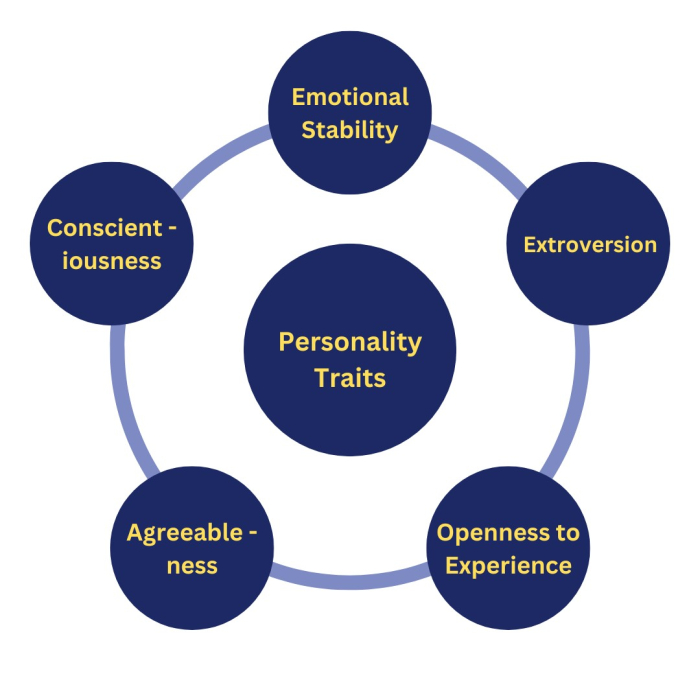
 Data Structure
Data Structure Networking
Networking RDBMS
RDBMS Operating System
Operating System Java
Java MS Excel
MS Excel iOS
iOS HTML
HTML CSS
CSS Android
Android Python
Python C Programming
C Programming C++
C++ C#
C# MongoDB
MongoDB MySQL
MySQL Javascript
Javascript PHP
PHP
- Selected Reading
- UPSC IAS Exams Notes
- Developer's Best Practices
- Questions and Answers
- Effective Resume Writing
- HR Interview Questions
- Computer Glossary
- Who is Who
5 Personality Development Steps to Become a Great Leader
A leader is more than a delegatory figure at an organization's high managerial level. Great leaders can impact their team and the organization and establish a connection between the two. Subordinates are always productive and committed to the company when they are led by such great leaders. Not all great leaders are born with a cape to create such ripple effects in their firm. Leadership can be developed over time through the process of learning from and experiencing things that help them evolve into a better version of themselves. In this article, we shall look at 5 personality development steps you can follow to become a great leader.

A Good Leader and A Great Leader: How Are They Different?
Leaders are the managing figures for any team, guiding them toward the right path of success. There is a thin line between being a good leader and a great leader. Good leaders set organizational objectives and focus their energy on attaining such goals with their teams. Great leaders find unique visions behind such objectives and create meaningful tasks for their subordinates. While good leaders are optimistic, great leaders can install optimism in their subordinates and bring out their passion to the fullest. Subordinates always choose a great leader to lead the way and mentor them to become successful employees.
5 Steps to Develop Your Personality as A Great Leader
Understanding the different dimensions of your personality can help you understand your leadership behavior. Here are five personality development steps one can take to bloom as a great leader ?

1. Emotional Stability
Leaders always have their plates full of multiple responsibilities. Every day, the life of a leader is filled with challenges that can be stressful and exciting at the same time. Leaders are required to deal with multiple emotions at the same time and take business calls that are unbiased and fruitful for the organization. Emotional stability is one of the prime personality traits required in a leader. It helps the leader tackle roadblocks and complex situations with ease. There are two extreme situations that a leader can face emotionally. A leader who is too calm can underestimate the risks and not think of contingency plans while handling a team. As a result, they may miss other people's thoughts in their team and come across as uninspiring figures. Similarly, a leader can disrupt the business balance with worries and insecurities if they are too unstable. Leaders must be emotionally intelligent to remain calm in the face of adversity and make sound business decisions. One can opt for training to check their emotional stability and improve the areas that make their emotional intelligence go off balance.
2. Extroversion
A leader is expected to be outgoing and engage with their team members to bring out their full potential. Extroversion is a vital personality trait for great leaders to set an example for their team. If a leader is too outgoing, it might lead to an aggressive approach to achieving the desired goals. Such leaders are prone to authoritatively dominating their teams. Their dictatorial behavior can sometimes disregard the thoughts of their team members and lead to high turnover. Similarly, a leader who is a closed door to their subordinates may forego the opportunity to engage their teams and may be perceived as isolated. To obtain the right level of extroversion, leaders can opt for professional training based on their current level of engagement. One can develop empathy and listening skills if they are too domineering, whereas training can be taken for public speaking if a leader shies away from interactions.
3. Openness to New Experiences
As a team leader, one must have a creative point of view to explore new possibilities and bring efficiency to the team. A leader must be imaginative and curious in their leadership approach while making business decisions or trying new experiences. Openness to new experiences is important for any team leader to think outside the box and break the monotony of work. There are highs and lows to this personality dimension that leaders usually face. A highly creative leader can often come up with multiple reactive ideas, each of which overlaps the previous idea. In such cases, the subordinates lack clarity on which idea to follow, get easily distracted, and fail to complete their open tasks efficiently. Having a low-imaginative approach can make the tasks monotonous and force the employees to perform within a defined scope of activities. A leader can look out for new possibilities that match their interests to improve their creativity and artistic patterns. To optimize their creativity standards, one can undergo training to prioritize the tasks at hand and suppress any distracting ideas that get in the way.
4. Agreeableness
Getting along with others is a basic requirement for a leader. As a leader, one is expected to get along with subordinates, the higher management of the organization, and external stakeholders. The next personality trait to be developed for a great leader is agreeableness. Agreeableness is the degree to which a leader gets along with others. Leaders with a high degree of agreeableness are outgoing and honest with everyone. They can trust the other party and are modest by nature. On the contrary, leaders with low levels of agreeableness are always suspicious of others and do not like to lower their guard. The optimum level of agreeableness depends on the business environment and the position of the leaders. Team leaders who belong to high managerial posts, such as CEOs, are required to be cautious while making business decisions. Similarly, leaders dealing with the teams on the ground are required to be frank and sympathetic towards their subordinates to make them feel connected to the work. To be a great leader, one needs to balance the right level of agreeableness as per the circumstances.
5. Conscientiousness
To be competent and organized at their work is a basic trait of any good leader. Conscientiousness is the final personality trait that a leader must develop to excel in their field. Leaders who are too conscientious tend to follow the path of perfectionism in their work. They often overburden themselves and their teams with tight deadlines and neglect the outside world. Such behavior in leaders can be handled by coaching about work-life balance. Lack of conscientiousness leads to sloppy work and missed deadlines. If a leader is unorganized, they can undergo training in effective organizational skills.
Conclusion
Leadership skills can be developed over time as a leader gets exposed to new opportunities in their career. One of the best ways to understand your strengths and weaknesses is to take feedback from your subordinates, colleagues, and seniors. Fellows around you can help you shape your awareness and build a personality that is suited for a great leader.

